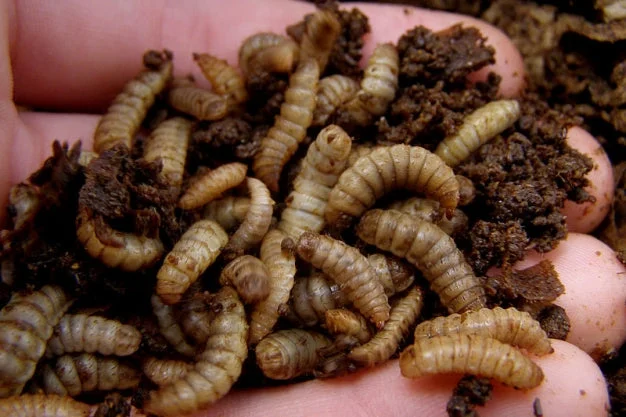The world’s growing population presents a significant challenge: how to feed everyone sustainably.
By 2050, global food demand is projected to increase by 59 to 98 percent.
Meeting this demand, particularly for high-quality protein foods like meat and dairy products, requires innovative solutions that consider environmental impacts.
One promising approach is the utilization of insects as a substitute for grain in animal feed, freeing up farmland for human food production.
Cattle, with their unique digestive systems, possess the ability to convert low-quality nutrients, such as grass and hay, into high-quality protein foods that meet human nutritional requirements.

However, during periods of low protein content in forage, additional protein sources like soybean meal are added to their diets, driving up meat production costs and reducing available farmland for human crops.
The emerging insect farming industry offers a potential solution.
Insects, such as the black soldier fly larvae, have a high nutritional profile and can be grown efficiently using waste from various industries, like pre-consumer food waste.
They are rich in protein (up to 50 percent) and fat (35 percent) during their larval stage.
Furthermore, feeding insects to livestock has been shown to have a smaller environmental footprint compared to conventional feed crops like soybean meal.
While the idea of consuming insects directly may not be widely accepted, incorporating them into livestock feed has gained traction.

Extensive research has demonstrated the feasibility of feeding black soldier fly larvae to chickens, pigs, and fish as a replacement for conventional protein feeds.
The American Association of Feed Control Officials has even approved the use of larvae as feed for poultry, pigs, and certain fish.
However, limited research has been conducted on feeding black soldier fly larvae to cattle, despite their potential benefits.
In an initial trial conducted by our laboratory, we fed cattle a base diet of hay supplemented with protein derived from either black soldier fly larvae or conventional cattle industry protein feeds.
The results indicated that the larvae-based supplement increased hay intake and digestion in a manner similar to the conventional protein supplement.
This promising outcome suggests that black soldier fly larvae could serve as an alternative protein source for cattle.
Further trials have been conducted, exploring aspects such as the removal of larvae fat, which can be converted into biodiesel, offering a dual sustainable product from black soldier flies.
Additionally, ongoing research aims to evaluate the impact of consuming larvae on methane production in cattle, a significant contributor to climate change.
Positive results could pave the way for regulatory approval of larvae as cattle feed.
Economics also play a crucial role in the adoption of insect-based feed.
An economic analysis compared the pricing of black soldier fly larvae with existing protein sources commonly used in cattle feed, such as soybean meal.
While the larvae were slightly more expensive due to their superior nutritional profile, it remains uncertain if the insect farming industry can achieve competitive pricing or if cattle producers would be willing to pay the higher cost.

Pictured above is the Cargill export terminal and the conveyor installation used to reload the soybean crop from trucks onto ships for transport to international destinations in Fordlândia, Brazil.
In the Fordlândia city of Santarém, over 2,000 square miles were cleared to grow soybeans over just seven years. That’s roughly the size of four Los Angeles.
More To Discover
- Wasted Peanut Skins Could Become Nutrient Rich Livestock Feed
- Superpowered Supercrystal Can Harness Sunlight For Enhanced Solar Energy and Hydrogen Production Using Nanotech
- Oil and Corn Giants Unite in Unlikely, And Unnecessary, Alliance Against Electric Cars
- The World’s Largest Experimental Fusion Reactor Is Online In Japan
With the global market for edible insects expanding rapidly, incorporating insects into animal food presents an opportunity to enhance the sustainability of both human and animal food systems.
The cattle industry, in particular, holds potential as an ideal market for insect-based feed.
Future research that engages both insect and cattle producers can help unlock the full potential of this innovative approach, leading to a more sustainable and efficient meat and dairy production.




















